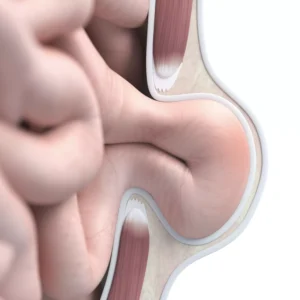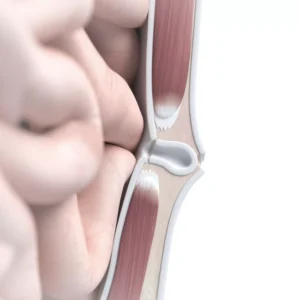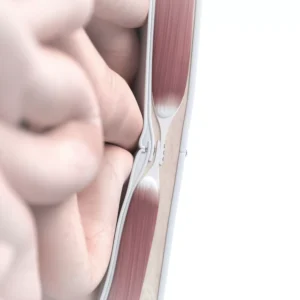Mains-free procedures
Today, mesh-free procedures are mainly used for very small fractures or in children and adolescents. They are associated with a slightly increased risk of recurrence and require a 4 to 6 week rest period after the operation. On the other hand, no foreign material remains in the body that could cause irritation or infection.
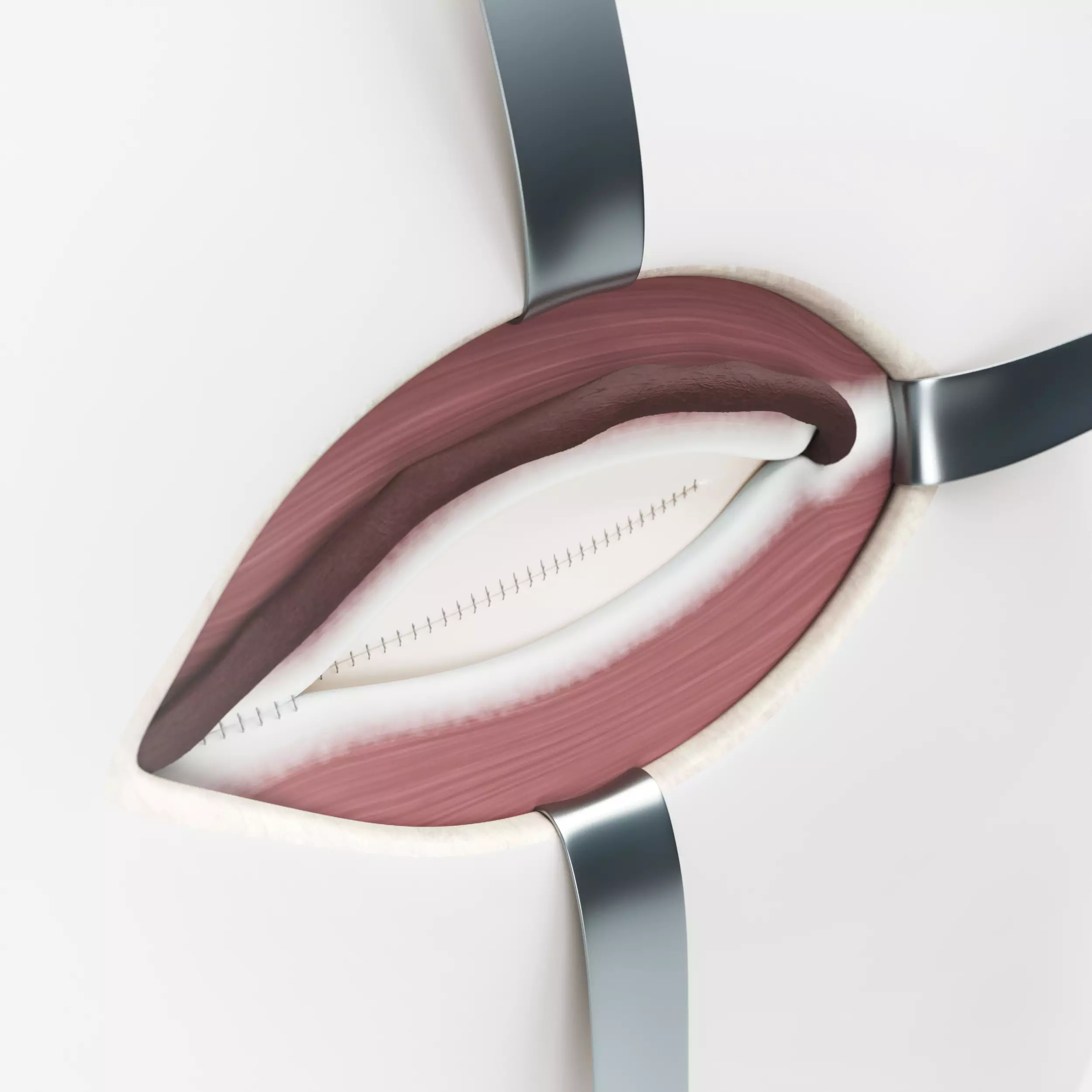
Shouldice surgery
The Shouldice operation is a surgical procedure in which the hernia’s hernia gap is closed with the body’s own tissue and which does not require an artificial mesh. The multi-layer suture technique tightens fascia and muscles to achieve greater stability of the abdominal wall.
It is used for inguinal hernias with very small hernial orifices (up to 1.5 cm in diameter). In the open surgical procedure, the hernia sac is pushed back into the abdominal cavity or partially removed and the peritoneum is closed with a suture. To additionally stabilise the posterior wall of the inguinal canal, the transverse fascia (fascia traversalis) is doubled with a continuous suture developed by Shouldice. Non-dissolving sutures are used for this. In the second step, the doubled fascia is fixed to the periosteum of the pubis and to the inguinal ligament.
Shouldice surgery is mainly used in children and adolescents who still have good tissue quality. If there is a contraindication to foreign material such as an allergy or if the patient does not want foreign material in the body, the Shouldice technique is an alternative to a surgical procedure with mesh. We are less likely to recommend this method for poor tissue quality or older patients.
In the case of thigh hernias / femoral hernias, the surgical technique according to McVay-Lotheisen is also possible, which also does not require the use of foreign material. Thus, a thigh hernia can be treated with a similar procedure through a small incision in the groin.
Advantages and disadvantages of Shouldice surgery
Disadvantages of Shouldice surgery are pulling pains that occur after the operation due to the tightened tissue layers and can last up to a few weeks. The patient should take it easy for about 4 weeks after this operation. Heavy physical exertion and sport should be avoided for about 2 months. The advantages of this technique are that there is no need for a mesh implant, the anatomical reconstruction of the abdominal wall and the possible detection of concomitant diseases in the abdominal cavity.
Shouldice surgery can be performed under local or general anaesthesia.
Often, when a fracture occurs again, a different surgical method is chosen than for the first operation. So if minimally invasive surgery was performed the first time, an open procedure is then used in a second case.
In a very old person with a unilateral hernia, one would use the Lichtenstein technique under local anaesthesia. Either because general anaesthesia is no longer possible or because general anaesthesia can have a very negative effect on existing dementia. Our team will try to find the best solution for your individual diagnosis in consultation with you.
Minimal repair technique according to Muschaweck
The minimal repair technique is an adaptation of the Shouldice technique, which also uses a special suture technique to stabilise the fasciae and relieve the irritated nerves in the groin region. It is mainly used for sportsmen’s groins.
Especially for high-performance and professional athletes, maintaining full mobility and a quick return to training are essential. With the Minimal Repair technique, the abdominal muscles retain their full elasticity, the groin its dynamism and the individual muscle layers can continue to glide over each other unhindered.
The operation can be performed with local, partial or general anaesthesia and is carried out through an 8cm incision in the groin area. Already after a few days, the patient can start light training again. Full physical exertion is possible after about 2 weeks.
Read more about:
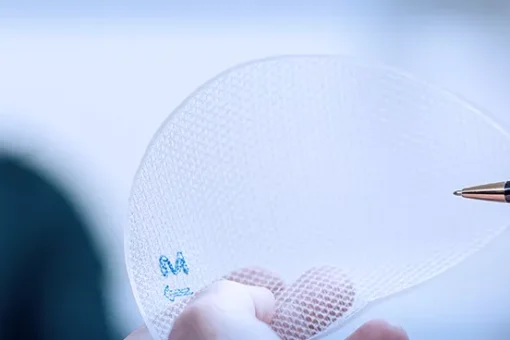
Procedure with mesh
A surgical procedure with mesh, as is mostly used today, has two major advantages: a significantly lower…
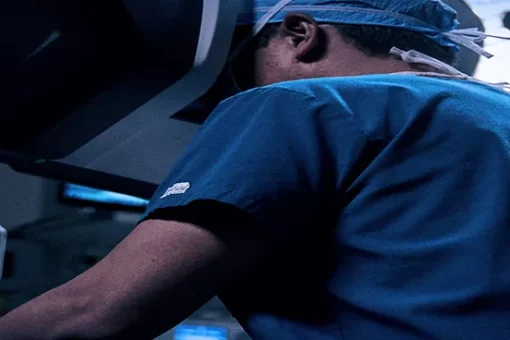
DaVinci surgical robot
The Hernia Centre Switzerland has the possibility to work with the DaVinci surgical robot for minimally invasive…

